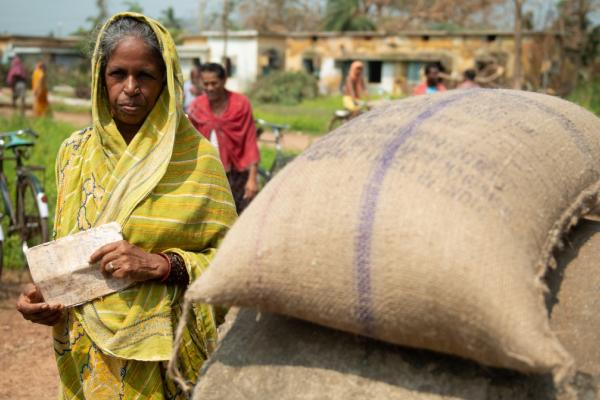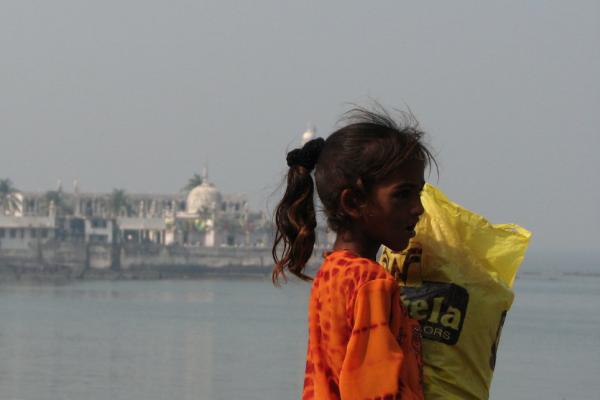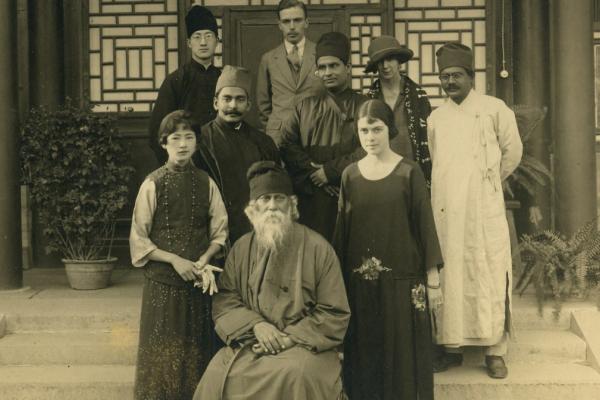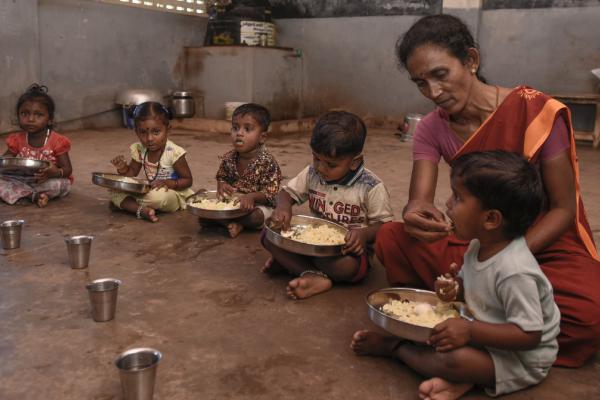Against the backdrop of the First World War centenary, commemoration efforts to honour the ‘soldierly sacrifice’ of Indians and Africans have come up short on acknowledging the non-fighting labour that kept the Allied war operations from collapsing. Tasked with maintaining transportation networks, upkeep of military equipment, cleaning up barracks and forced into a bevy of non-remunerative work including clearing human and draught waste, this labour was essential to enable swift mobilisation of troops and resources across multiple battlefronts.
Placed firmly in the fetid, smoke-filled trenches and desert wastes of wartime France and Mesopotamia (broadly present-day Iraq), Radhika Singha’s fabulous new book is a stirring account of the hapless lives of the ‘follower’ non-combatant ranks of the celebrated fighting arms of the Indian army which formed the largest voluntary expeditionary forces assembled in the War. It pieces together in painstaking detail the little known story of the dual struggles of countless coercively drafted labour and porter corps, who first kept the wheels of the war running and then ‘fought’ again in the vain hope of getting their work respected through the Raj’s financial munificence. Her narrative of the parsimonious financial and institutional support lent to the non-combatant personnel drawn from diverse areas from the Indian subcontinent offers a useful corrective to the idea of war being only a ‘combatant event’.
A new kind of war
As the 1900s rolled over, wars became more deeply enmeshed in the drift of larger geopolitical imperatives. European rivalries sitting atop a tinderbox of 19th-century imperial resentments radiated waves of cataclysmic disruptions that would punctuate the course of the 20th century.
‘Coolie labour’ was critical in providing the underlay for the mammoth logistical requirements for the new forms of warfare perfected in the recurring conflicts of the 20th century.
The late Boer Wars in South Africa quickly reinforced Britain’s inclination for armed colonial repression, which was then swiftly visited upon hordes of inflamed Chinese ‘Boxers’ in 1899. Only a few weeks separated the two conflicts. When the rebellion in China was crushed in 1901 by an Anglo-American led expeditionary force equipped with military manpower drafted from colonial India, it offered a dispiriting snapshot of how wars would be prosecuted by powers unwilling to abandon a two-century-old model of politico-economic exploitation.
The armed build-up of colonial forces across India’s north-western frontier brought about by Russian advances and the accompanying infrastructural frenzy to tie up the subcontinent’s financial sinews more tightly with the imperial financial network afforded a new meaning to this emerging phase of ‘political war’. This protracted phase of wartime events sailed against the visible tide of anti-colonial resentment on issues of repeated overseas troop mobilisation, coercive labour recruitment, and indiscriminate industrial exploitation of colonial resources in the pursuit of winning both tactical and strategic battles for military, territorial, and diplomatic superiority. Conflict was made lethal not just by armed brutality but its seepage into and sustenance through ruptures effected in the political, economic and social fabric of regions which became reluctant participants in these conflicts.
Singha’s book delineates patterns through which workers signed off through hurriedly drafted enlistment […] A ‘cut’ from the pay due to them was siphoned off by non-military hierarchical levers.
‘Coolie labour’ was critical in providing the underlay for the mammoth logistical requirements for the new forms of warfare perfected in the recurring conflicts of the 20th century. Men and women bearing spanners, brooms, and brushes and quarrying heaps of stones to and from railway sites or trenches became part of this larger colonial-led military mobilisation programme. Undertaken at periodic intervals, these mobilisations could not have been executed without this ‘civilian’ or allied workforce.
The cynicism of the First World War was reflected in its unbridled usage of colonial labour and the need to repeatedly institute non-voluntary forms of participation on groups with the most limited array of tools to resist them. Singha’s book delineates patterns through which workers signed off through hurriedly drafted enlistment papers with barely any clear enumeration of work duties, were funnelled through pre-existing recruitment networks in the Indian hinterland. A ‘cut’ from the pay due to them was siphoned off by non-military hierarchical levers like village headman or the church leaders who acted both as imperial recruiters and conduits for the perpetuation of colonial rule in trans-frontier tracts in the north east. Financial inducements on offer also included a variable amount of advance payment (again dependent on the workers’ location and bargaining power of those who controlled them) and sometimes also took the form of tax and tributary concessions such as in the case of the Garo, Lushai, Kuki, and Naga workers who were drafted to work in the French theatre.
Letters from the non-combatant workers and coolies show up an even more harrowing portrait of the effect of the War. For those at the bottom of the occupational ladder, a trip abroad did not always result in securing better terms for either life or limb or both.
The fact that the ‘coolies’ occupied the lowest rung of occupational and caste hierarchies both at home and abroad dictated their wartime duties and circumscribed their agency to seek redress on issues of pay disparity and leave from work. While letters of soldiers stationed in battlefields have received attention from scholars like David Omissi (1999) and Claude Markovits (2010) who paint a grim picture of the economic situation of the Indian ‘home-front’, letters from the non-combatant workers and coolies show up an even more harrowing portrait of the effect of the War. For those at the bottom of the occupational ladder, a trip abroad did not always result in securing better terms for either life or limb or both. Offers of post-deployment monetary rewards and industrial rehabilitation programmes often faded away and were segmented along the lines of rank and privilege. Efforts to portray wartime service itself as a badge of honour to uplift the status of ‘follower’ ranks back home, too, were fraught with complications.
The resentment and anguish over non-recognition of the coolies’ work, Singha contends, was fractured along the axes of caste, faith, region, and networks of kinship. For instance, labour extracted from areas like Punjab, with high levels of troop recruitment, witnessed relatively better terms of remuneration and post-war benefits and a profusion of soldiers’ welfare boards compared with that from the north-eastern frontiers (p. 296).
A counter-history of the war
The diverse theatres of war configured labour relations and experiences differently. Coolie labour, and enrolled and non-enrolled followers of combat units stationed in France were exposed to the rigours of trench warfare and fleeting interactions with workmen from other non-Asian regions. The posse of workers shipped to Mesopotamia witnessed first-hand the prospect of British imperial defeat at the hands of Germans along with the backbreaking regimen of salvage, sanitation and rescue work that was not fully written into their contracts. The asymmetric nature of work-related responsibilities and the disingenuous, legally impaired mode of pressing these workers into action under the veneer of ‘voluntary enlistment’ has contributed in large measure for these groups to be elided from official accounts as well as from the larger scholarship on the war.
Singha’s devoted analysis […] has shed light on India’s rich states-based archives’ potential to propel the study of the First World War.
Singha’s work also provides a striking ‘counter-history’ of wartime propaganda. It offers a veritable counter to a body of work that looks at the visual, printed material of the First World War only to draw out themes (read values) of ‘thrift’, landscapes of racial and combatant geographies, or the sacrifices of the non-combatant non-Asian ‘Home fronts’. Her scrutiny of war-related publicity material examines post-war training schemes foregrounding the workmen who now needed to be put back into seasonal, conventional occupational moulds from which they had been extricated years ago. This was partly to cut down on the pension commitments of these non-combatants and also to keep these future sources of manpower productively employed (p. 283).
Even an otherwise feasible programme of colonial industrial training and skilling for these men remained under-funded. They were often fulfilled only in publicity posters invoking memories of the illusory promises that governed wartime recruitment of non-combatants. The book, therefore, outlines an alternative history of colonial wartime labour exploitation and colossal disregard for medical care and rehabilitation of physical and mental injuries.
Singha’s elegant work is a fine testament to both her historical acuity and sensitivity. It is an important methodological medium to understand how sources render their flavour onto history writing. Her book is a form of service. Were it not for her decision to explore some rare archival holdings, one would not have discovered the rich tapestry of the depravity of colonial rule over coolie labourers slaving under severe structural and institutional constraints during the war. For instance, how would readers and scholars of the First World War know about the effect of ‘racial and institutional hierarchies’ (131) that mediated access to basic occupational entitlements like winter clothing, medical care and food to these cadres of workers if not by looking at the direction of documents which reveal this? Or how would the historians of First World War know about the rigours of ‘clockwork’ and ‘time-keeping’ as they extended the gruelling work regimen of these workers toiling amidst the ‘scatter of broken bayonets’ and ‘density of bodies’ (247)?
Singha’s devoted analysis of theological and lodge records, payroll lists tucked away in wartime archival materials, recruiters’ diaries stacked in several overlooked state archives from Karnataka to Orissa, coupled with a watchful excavation of revelatory data from the records of the India Office Collection (UK) and beyond has shed light on India’s rich states-based archives’ potential to propel the study of the First World War with a renewed focus on regional and provincial controlling mechanisms that shaped the outcomes of this event for the ‘forgotten coolie’.
The military as political practice
An important take away from the book is the fact that dislocation effected by the recruiting campaigns of the First World fit neatly into a long continuum of the movement of people away from the subcontinent. The author’s linkage of the migratory pathways of indentured workers and its attendant dislocation and despair with those about to be shipped to France or the Gulf for wartime work envelops the First World War into a more pointed discussion on the centrifugal disruptions of the twentieth century which moved people away from their traditional rhythms of work and life – a lasting impact of colonialism.
Wartime histories do not always reflect adequately on the political and ideological ecosystem within which combatants and non-combatants performed their work.
However, in contrast to the histories of indenture – where politics is embedded in every aspect of the migrants’ life cycles – wartime histories do not always reflect adequately on the political and ideological ecosystem within which combatants and non-combatants performed their work. Historians, students, and researchers of past wars who have elevated the 19th-century Prussian military thinker Karl von Clausewitz to great heights often end up overlooking his dictum of ‘wars being a continuation of politics’ by not looking at military service as a popular, institutional manifestation of the political practice of ideas. Thankfully, the work of Srinath Raghavan (2016), Santanu Das (2018) and now Radhika Singha, among others, has inspired a new wave of history writing (and history-writers) which looks at past conflicts through different perspectives.
Singha’s book offers a history of a completely forgotten people of this war and one would have, therefore, liked to have read more on the combination of political ideas that drove these labourers and workers to some form of political action. The book offers scintillating insights into the world of the Khilafat and Akali movements in Punjab and the pronouncements of leaders like Gandhi and others on the ethics of wartime work. But it leaves some scope to speculate on how exactly ideas drove the coolie labour to some decisive action, if any, at a time when radical forms of collective anti-colonial agitation were taking root in India and were establishing lines of communication as far away as North America and Soviet Russia. If industrial training was becoming the half-baked strategy of choice for the colonial establishment to ostensibly rehabilitate non-combatant workers, did it fail due to budgetary constraints? Or did the cause lie in a perceived risk of factory and industrial unionism affecting injured and resentful war workers, thereby rendering them ineffective in the event of a future war?
The Coolie’s Great War […] has also pointed a way forward to think of the Great War in terms of those of who had largely been invisible in our reckoning of this event.
Studying and writing history is a deeply humbling pursuit because it reveals multiple ways to understand the past, beyond a purely linear and unidirectional approach. The Coolie’s Great War by Radhika Singha has contributed handsomely to the body of scholarship on the First World War but it has also pointed a way forward to think of the Great War in terms of those of who had largely been invisible in our reckoning of this event. It has taken more than a century to acknowledge the Indian coolie’s ‘Great War’ and we should be glad that a historian has performed this task with empathy and sensitivity.









